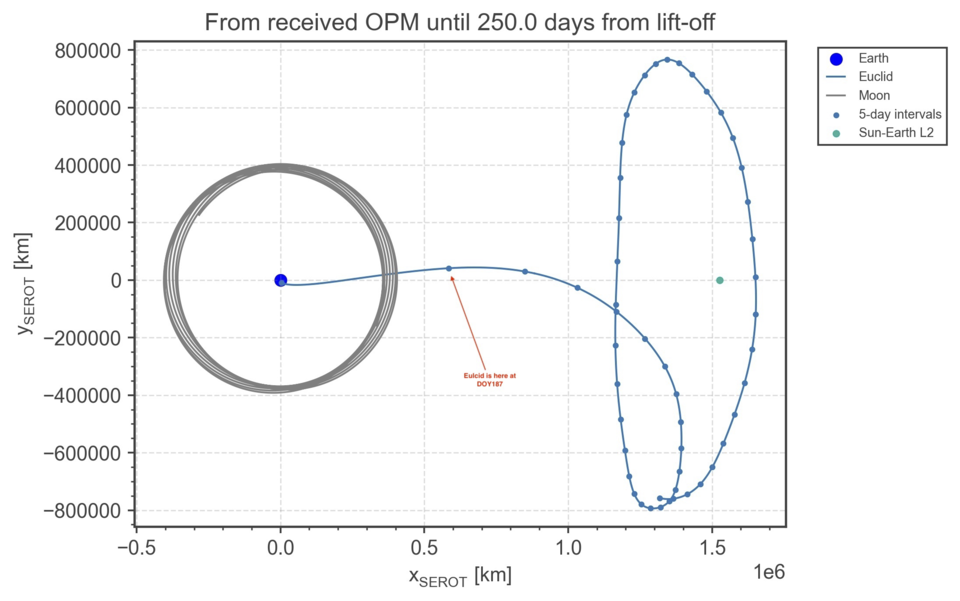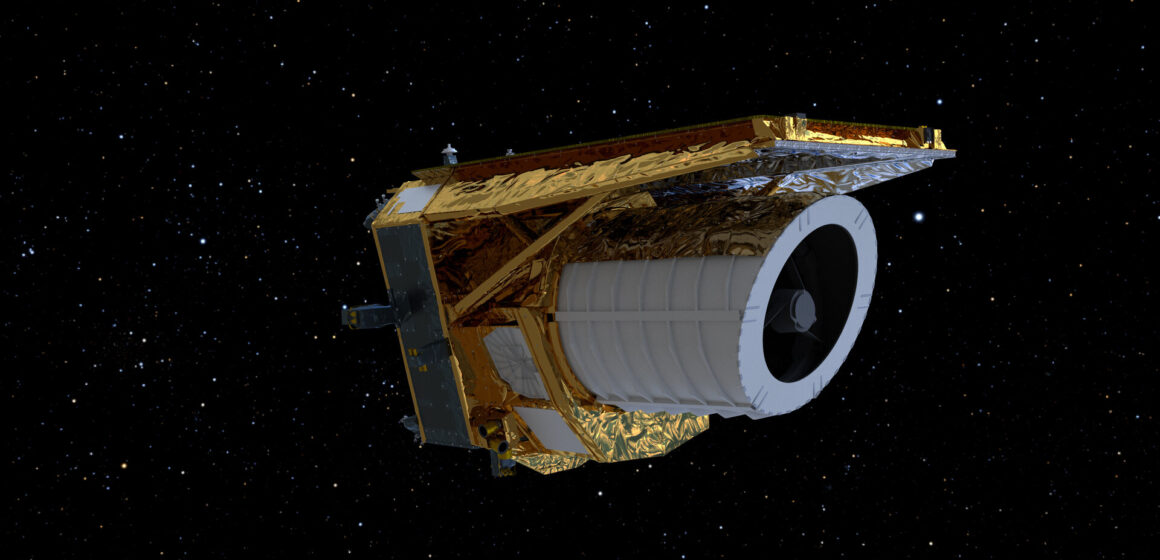Follow Euclid on its journey to the L2 Lagrange point and find out how mission controllers at ESOC in Darmstadt continue to power-up, check and calibrate the spacecraft’s equipment, telescope and science instruments as they prepare for routine science observations.
July 11-12. Wake up the VIS
The VIS control electronics were turned on (primary and backup branches) and the operations team received “synthetic” data from the instrument confirming its proper operation.
In addition, the spacecraft’s micropropulsion system was activated for the first time and successfully tested. This system consists of six redundant cold gas micro thrusters, which are essential to ensure that Euclid can achieve very precise and stable guidance and deliver the highest quality images.
July 9. High gain antenna release
The Euclid operations team sent a command to release the high-gain K-band antenna, part of the spacecraft’s deep space communications system. This antenna will be used to send more than 100 GB of compressed data down from the spacecraft to a large antenna in ESA’s Estrack communications network, daily.
Euclid is now the largest data transmitter (in terms of data rate of about 74 Mbps) from translunar space. That’s about 2-3 times faster than the speeds used by the James Webb Space Telescope, which held the trophy until now.
With this critical operation successfully accomplished, Euclid prepares to open his eyes by turning on the focal plane detectors of both science instruments.
July 6. Wake up NISP
The wheel mechanisms in the NISP instrument were activated for the first time. The engineers received telemetry from the spacecraft about the exact positions of the wheels and ordered them to rotate to the desired position.
The spacecraft remained slightly tilted toward the Sun to allow some sunlight to enter the telescope tube without directly illuminating its primary mirror (solar aspect angle between 51–54 degrees). This procedure heats the inside of the telescope and ensures that any trace of ice evaporates. Temperatures and electrical power levels are nominal.
 Euclid’s trajectory to L2
Euclid’s trajectory to L2
The journey to L2 continues. This figure shows Euclid’s position on July 6. The diagram traces the trajectory of the spacecraft as seen from the plane of the ecliptic, which is the Earth-Sun plane.
July 4–8. Defrost for a perfect look
Euclid needed to remove any moisture that might have frozen onto his telescope’s mirrors, obscuring and distorting his otherwise pristine views of the distant cosmos. To do this, Euclid was inclined towards the Sun. When sunlight enters the telescope tube and the temperature rises, any remaining trace of ice evaporates. This orientation is maintained for several days to allow sufficient time for the water vapor to escape into space.
July 3. Performing a critical orbit maneuver
Launch and Early Operations Phase (LEOP) operations progressed nominally on the second day after launch. The main events were the execution of the first time-critical orbit control maneuver, reaction wheel tests and the completion of the remaining LEOP activities before transitioning to commissioning operations.
July 2. On the way to L2
Commands were sent to Euclid to execute a maneuver that successfully changed the spacecraft’s trajectory by about 2.14 m/s and set it on course to join Gaia and Webb around Sun-Earth Lagrange Point 2.

